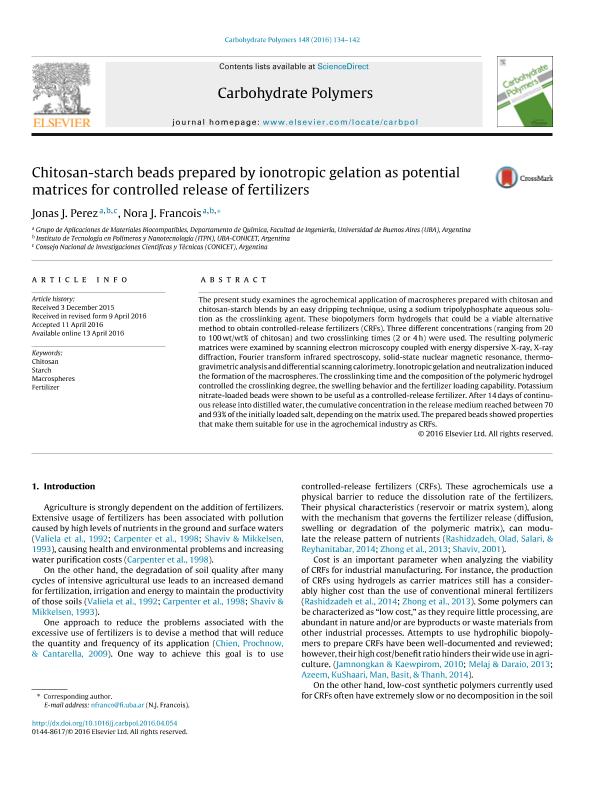Artículo
Chitosan-starch beads prepared by ionotropic gelation as potential matrices for controlled release of fertilizers
Fecha de publicación:
09/2016
Editorial:
Elsevier
Revista:
Carbohydrate Polymers
ISSN:
0144-8617
Idioma:
Inglés
Tipo de recurso:
Artículo publicado
Clasificación temática:
Resumen
The present study examines the agrochemical application of macrospheres prepared with chitosan and chitosan-starch blends by an easy dripping technique, using a sodium tripolyphosphate aqueous solution as the crosslinking agent. These biopolymers form hydrogels that could be a viable alternative method to obtain controlled-release fertilizers (CRFs). Three different concentrations (ranging from 20 to 100 wt/wt% of chitosan) and two crosslinking times (2 or 4 h) were used. The resulting polymeric matrices were examined by scanning electron microscopy coupled with energy dispersive X-ray, X-ray diffraction, Fourier transform infrared spectroscopy, solid-state nuclear magnetic resonance, thermogravimetric analysis and differential scanning calorimetry. Ionotropic gelation and neutralization induced the formation of the macrospheres. The crosslinking time and the composition of the polymeric hydrogel controlled the crosslinking degree, the swelling behavior and the fertilizer loading capability. Potassium nitrate-loaded beads were shown to be useful as a controlled-release fertilizer. After 14 days of continuous release into distilled water, the cumulative concentration in the release medium reached between 70 and 93% of the initially loaded salt, depending on the matrix used. The prepared beads showed properties that make them suitable for use in the agrochemical industry as CRFs.
Palabras clave:
Chitosan
,
Starch
,
Macrospheres
,
Fertilizer
Archivos asociados
Licencia
Identificadores
Colecciones
Articulos(SEDE CENTRAL)
Articulos de SEDE CENTRAL
Articulos de SEDE CENTRAL
Citación
Perez Bravo, Jonas Jose; Francois, Nora; Chitosan-starch beads prepared by ionotropic gelation as potential matrices for controlled release of fertilizers; Elsevier; Carbohydrate Polymers; 148; 9-2016; 134-142
Compartir
Altmétricas




